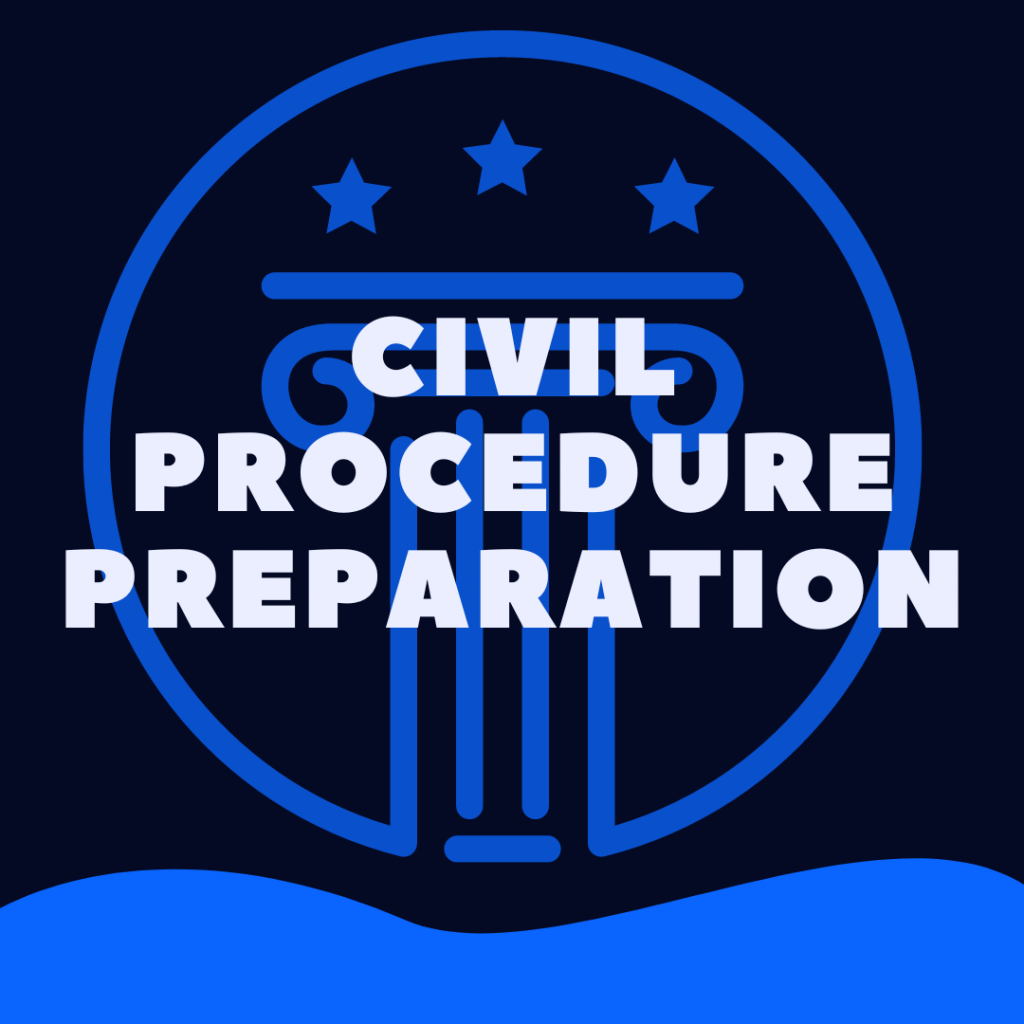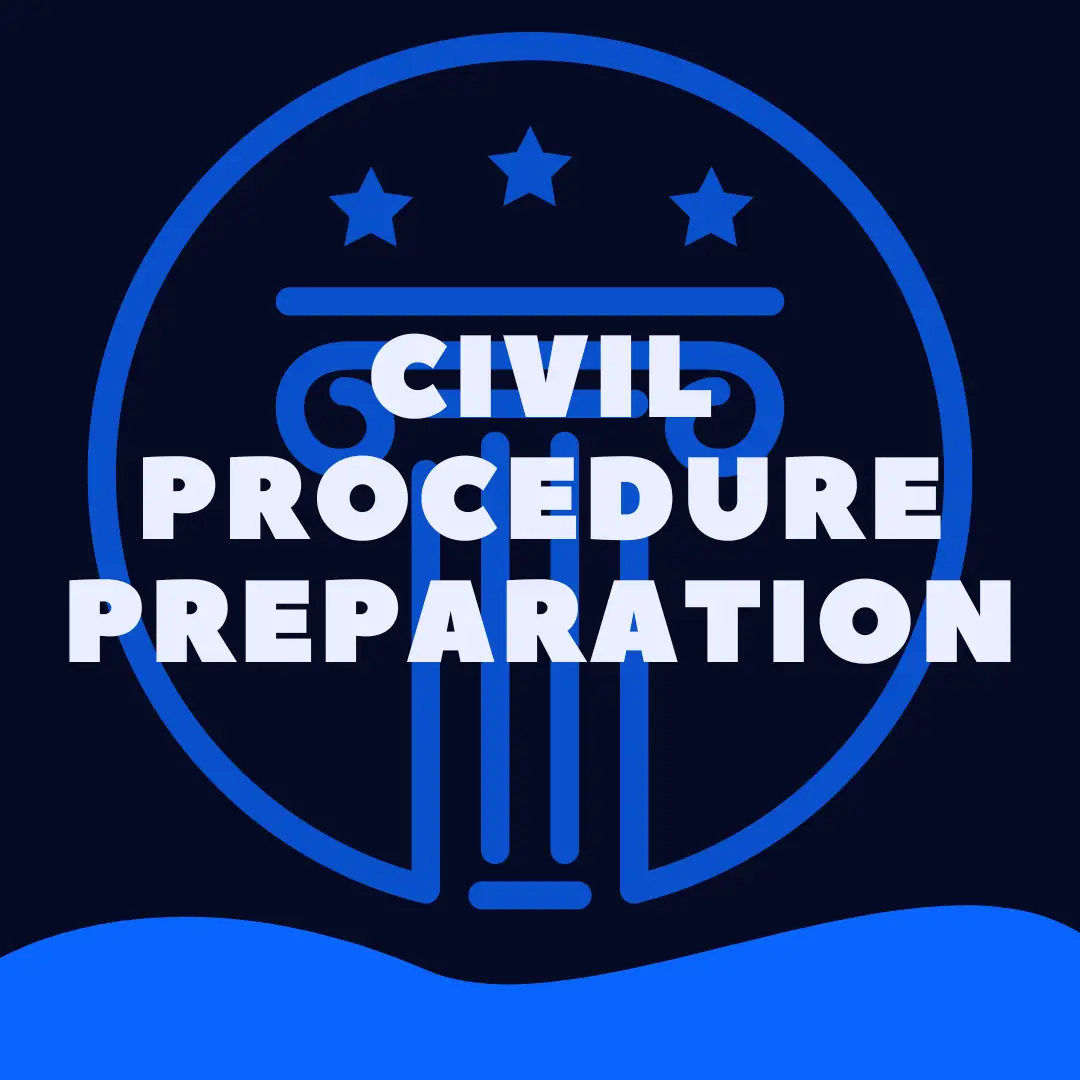One of the best ways to prepare for law school is to start reading the cases you’ll confront in the 1L year in advance.
These are five of the cases you can expect to have to know forwards and backwards in your first year of civil procedure.
Civil Procedure Cases Law Students Should Know
Introduction
First year law students across the United States suffer though a class called “Civil Procedure” aka “civ pro.”
Civil Procedure is the class where newby law student learn the rules of moving a court case through its various steps.
While there are many rules the students learn, most of the class is taught through the reading and analysis of cases.
As the baby law student is learning about civil procedure, the student is also working on gaining the skills he or she will need to survive in law school and in the legal world.
This is why so much time is spent on working through cases that are extremely old and rarely talked about in actually filing a case for a client.
More important than the actual rules of civil procedure is the ability to read/understand a case.
Pennoyer vs Neff, 95 US 714 (1878)
Pennoyer v Neff is literally one of the first cases you’ll come across in civil procedure class.
This case presents a challenge to law students for several reasons:
- the case discusses many legal terms (some of which are in latin) that the student has never heard before and has not yet learned
- the case is over 100 years old, so the language is antiquated
- the language in the case is very formal, which can make your eyes cross while trying to read it
- the case is a bit convoluted, and you really have to pay attention to understand even why the case is named what it is
This case is about jurisdiction, and introduces the student to the concepts of the court having power over a party (or property).
Neff hired an attorney to buy some land. Neff got the land, but didn’t pay the attorney he hired to help him.
The attorney wanted his money, so he tried to sue Neff.
The attorney couldn’t find Neff, but he knew where the property was (after all, he helped Neff buy it).
So the attorney got a judgment against Neff, and then tried to get his money out of the property. Pennoyer is another individual, who was associated with the land.
International Shoe v Washington, 326 US 310 (1945)
International Shoe is a case about whether a court in one state has the power over litigants located elsewhere.
The state of Washington enacted a business tax on the businesses in its state.
International Shoe (a company that was not physically located in Washington or registered in Washington) did business in Washington (salemen selling shoes).
International Shoe did not want to pay Washington any business taxes, after all, they weren’t located there.
A lawsuit resulted, naturally, to settle the question of how much contact or interaction a personal or business would have to engage in to be subject to the power of the courts in that state.
While modern civil cases rarely touch on International Shoe, the concepts of ‘minimum contacts’ are commonly discussed.
Gray v American Radiator, 22 Ill. 2d 432 (1961)
Gray v American Radiator introduces students to the concepts of the appropriate forum (aka location or place) for the court case to procede.
In this case, the plaintiff was injured when a product made by American Radiator (water heater) exploded.
Multiple companies that contributed to the production of the water heater were sued.
The explosion occurred in Illinois.
Parts of the water heater were made in other states, like Ohio and Pennsylvania.
Was Illinois an appropriate place to hear the case, considering that the other companies were located outside of Illinois?
This case introduces students to ‘long-arm’ statutes and shows students how the concepts of personal jurisdiction change and develop over time.
World Wide Volkswagen v Woodson, 44 US 286 (1980)
This case involved a car (not surprising, given the named parties).
The people who bought the car were residents of New York.
They took a road trip.
In Oklahoma, the owners of the car got into an auto accident.
In the crash, a fire started, and the owners were seriously hurt.
Naturally, they sued.
The case was filed in Oklahoma.
Volkswagen tried to get out of the case on the basis of jurisdiction, because the company did not do business in Oklahoma, or otherwise seek to do anything to put the company under the power of the state.
The court’s opinion discusses at length the requirements for in person jurisdiction, minimum contacts, and Oklahoma’s long arm statute.
Asahi Metal Industry v Superior Court, 480 US 102 (1987)
This is yet another jurisdiction case. As you can see, as the cases progress through the year (and this post), the facts tend to get messier and messier.
In this case, the plaintiff was a Japanese company.
They made products and sold those products to lots of companies in other countries.
One of these companies made products that were sold in California, United States.
One of these products was a motorcycle.
In California, a man and his wife died when they crashed on their motorcycle.
The family of the man sued the company that made the motorcycle.
In turn, the company that made the motorcycle sued the Japanese plaintiff.
The question: could the state of California exercise jurisdiction over the Japanese company?
In the end, the decision was no, Asahi had not done enough to conduct activities within the state (not enough minimum contacts).
Other Tips To Get Ready For Civil Procedure
The reading for civil procedure is very heavy, especially for folks who do not read fast, who do not yet have experience reading cases, and for people who are still learning the legal language.
Here are some recommendations for rising 1Ls:
- Read cases together with other students. And not just sit next to each other while reading. Read each paragraph together (or even read it out loud) and then stop, and talk about what each paragraph said or meant. If you can’t explain it to someone else, you don’t understand it. Reading cases this way helps you avoid that mindless place you can go where you read something and your brain just doesn’t process anything.
- Get a study guide sooner. Law schools tell you to avoid purchasing study guides. Study guides should not be used as a shortcut or an alternative to actually reading the case. But they can help you just understand ‘the point’ of the case, or give you more background on what the important parts are to focus on.
- Consider a law school prep course. While a prep course won’t give you everything you’ll need in that first year, it will help introduce some topics and skills to you so that the first semester is just not quite as hard.
Remember–there is no shortcut in law school. You can’t get around doing the work. And the learning curve is just SO STEEP.
But you can be better prepared that your colleagues by getting a jump start on that learning curve.
Thinking about law school?
Check out our library of completely free articles aimed to help future law students.
You might also like:
- Can Lawyers Have An OnlyFans?
- Can I Get Into Law School With a 2.9 GPA?
- Why Are Lawyers Paid So Much?
- Is It Illegal To Change Lanes In An Intersection In Wisconsin?
- Can a Victim Not Show Up In Court?
- Can a Prosecutor Also Be a Defense Attorney?
- Is Movie Hopping Illegal?
- Is Homework Illegal?
- How To Prepare For Law School In Middle School


